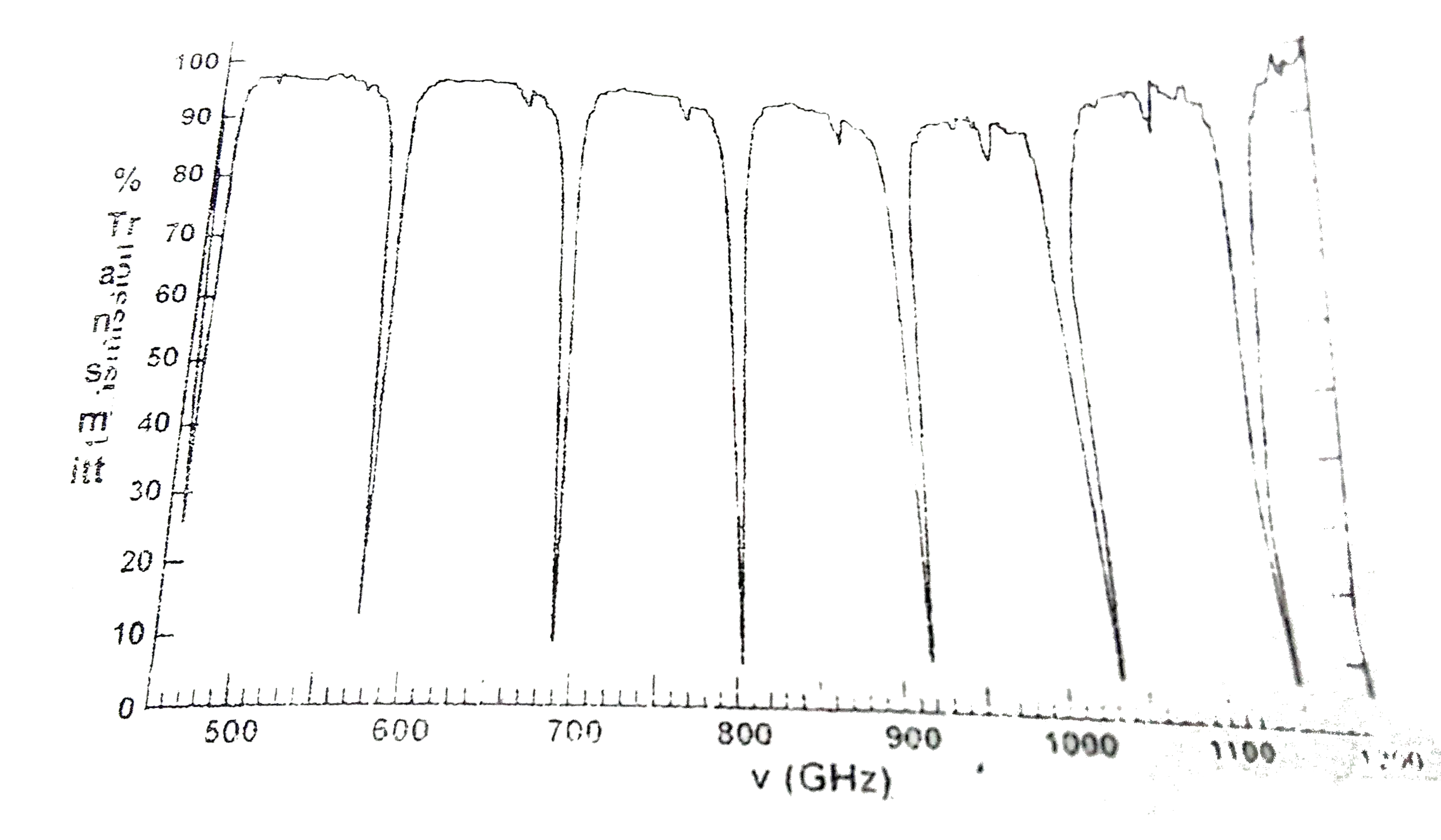Rotational energy levels of diatomic molecules are well described by the formula EJ=BJ(J+1), where J is the rotational quantum number of the molecule and B its rotational constant. B is related to the reduced
mass μ and the bond length R of the molecule through the equation B=h28π2μR2.
In general, spectroscopic transitions appear at photon energies which are equal to the energy difference between appropriate states of a molecule (hv=ΔE). The observed rotational transitions occur between adjacent rotational levels, hence ΔE=EJ+1−EJ=2B(J+1). Consequently, successive rotational transitions that appear on the spectrum (such as the one shown here) follow the equation h(Δυ)=2B.

By inspecting the spectrum provided, determine the following quantities for ^(2)CpC with appropriate units
(a) Δυ (b) B (c) R
The correct Answer is:{:a) For example : ΔV=1150−1035=115GHz
{:b) B=hΔv2=6.63×10−34×115'×1092=3.81×10−23J
{:c) μ=m(C)×m(O)m(CO)=12×1628=6.86a.u.=1,14×10−26kg
For interatomic distance R:
R=h2π√2μB=3.63×10−342×3.14√2×1.14×10−26×3.81×10−23=1.13×10−10m=1.13Å
Step by step video & image solution for Rotational energy levels of diatomic molecules are well described by the formula E_(J)=BJ(J+1), where J is the rotational quantum number of the molecule and B its rotational constant. B is related to the reduced mass mu and the bond length R of the molecule through the equation B=h^(2)/(8pi^(2)muR^(2)). In general, spectroscopic transitions appear at photon energies which are equal to the energy difference between appropriate states of a molecule (hv=DeltaE). The observed rotational transitions occur between adjacent rotational levels, hence DeltaE=E_(J+1)-E_(J)=2B(J+1). Consequently, successive rotational transitions that appear on the spectrum (such as the one shown here) follow the equation h(Deltaupsilon)=2B. By inspecting the spectrum provided, determine the following quantities for ^(2) C ^(p)C with appropriate units (a) Deltaupsilon (b) B (c) R by Chemistry experts to help you in doubts & scoring excellent marks in Class 12 exams.
Similar Questions
Bond energy of a molecule :
View SolutionThe mean rotational kinetic energy of a diatomic molecule at temperature T is :
View SolutionThe energy of the rotational motion of the molecules in n moles of nitrogen at temperature of T K is x nRT. Find the value of x.
View SolutionThe kinetic energy of molecules at constant tempreature in gaseous state is
View Solutionif The energy difference between the ground state and excited state of an atom is 4.4×10−19J. the wavelength of photon required to produce this transition is
View SolutionIn a diatiomic molecule, the rotational energy at a given temperature
View SolutionDiatomic molecules like hydrogen have energies due to both translations as well as rotational motion. From the equation in kinetic theory pV=23E,E is
View SolutionThe average rotational kinetic energy of hydrogen molecule at a temperature T is E. The average translational kinetic energy of helium at same temperature will be:
View SolutionThe energy of stable states of the hydrogen atom is given by En=−2.18×10−8/n2[J] where n denotes the principal quantum number.
In what spectral range is the Lyman series lying?View SolutionThe rotational kinetic energy of a body is E. In the absence of external torque, the mass of the body is halved and its radius of gyration is doubled. Its rotational kinetic energy is
View Solution

